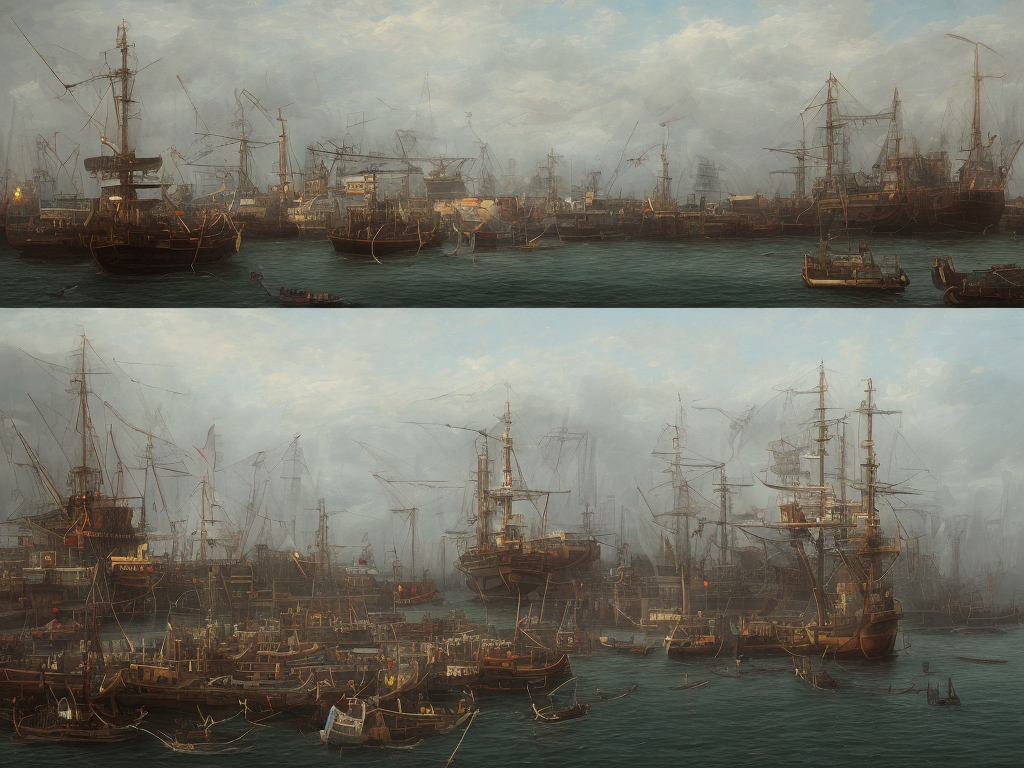
Ports and harbors are two terms that are often used interchangeably but they actually refer to slightly different things. Both are areas where ships can dock, but there are some differences between the two. Let us take a closer look.
Definition of Ports and Harbours
A port can be defined as a facility constructed for the use of docking and unloading vessels, which could be used for transportation of people, materials or goods. Ports can be natural or man-made and can handle both domestic and international vessels of all sizes. Ports are usually located near the sea or other large bodies of water, so that they can easily accommodate larger vessels.
A harbor, on the other hand, is a part of a body of water that is protected and sheltered from the open sea, and is used as a place of anchorage or for loading and unloading ships. Harbours can be natural or man-made, but unlike ports, they are usually smaller and more confined. They can be found along coastlines, bays, rivers or lakes, and are often protected by breakwaters or other structures that create a safe refuge for boats or ships.
Functions of Ports and Harbours
Ports and harbours both serve the same purpose in terms of accommodating ships and vessels, however, they differ in their functions.
Ports are used for a variety of activities such as loading and unloading cargo, refueling, repairing and maintaining vessels, and storing or transporting goods. Ports are also a hub for trade and commerce, as they facilitate the transfer of cargo between ships and land-based transportation such as rail or trucks. There are several different types or classifications of ports which have their own specific functions such as seaports, river or inland ports, fishing ports, military ports, among others.
Harbours, on the other hand, are primarily used as a sheltered anchorage for boats or ships, where ships can take shelter from rough seas or storms. In addition, harbours can also be used as a recreational facility for activities like boating, fishing, swimming or other water-based activities. Harbours are often developed to enhance regional tourism and provide residents with amenities to enjoy recreational activities.
Types of Port and Harbour Infrastructure
Ports and harbours can be categorized according to their physical infrastructure, which can be of different types, depending on their functions and purposes.
For ports, their infrastructure is typically geared towards accommodating the large, ocean-going vessels that carry cargo across the globe. The most typical types of port infrastructure include:
1. Berths: These are structures that extend from the shore out into the water which are used for docking and loading or unloading vessels. Berths are designed to accommodate ship sizes and are equipped with a range of facilities including cranes, cargo handling equipment, and storage facilities.
2. Wharves: these are similar to berths, but serve a specific purpose, such as unloading or loading of goods or passengers.
3. Docks: A dock is usually a large body of water where ships can safely moor, and it can be either natural or man-made. Docks have various functions depending on location and type, but they are generally considered as a confined area within a larger port facility.
Harbours are smaller than ports and are generally located in more sheltered locations. Depending on their purpose, there are different types of harbour infrastructure, such as:
1. Breakwaters: These are walls or barriers that are built to protect the harbour from waves or currents. Breakwaters are often made from concrete or rock and are designed to reduce the impact of storms or high tides.
2. Piers: These are structures that extend from shore out into the water, much like a jetty, and are used as an anchorage for boats, or as a location for loading and unloading cargo.
3. Docks: As with port infrastructure, docks in harbours also provide a safe anchorage for ships. They are usually smaller than those found in ports and are typically designed for smaller vessels.
Conclusion
In conclusion, ports and harbours are both critical components of maritime transportation and have their own specific functions and purposes. They differ in terms of size, location, and infrastructure, but they both play an integral role in facilitating the movement of goods, passengers, and services across national borders. Ports are larger and more complex facilities used for international trade, while harbours are smaller and serve as safe anchorages for boats and ships. The classification of ports and harbours can be based on a range of criteria such as location, type of cargo handled, or services offered. Understanding these differences is essential for those working in the maritime industry, as it can influence decisions relating to vessel design, cargo handling, and infrastructure development.
 Self-Instruct
Self-Instruct